
Meet us at Bengaluru Tech Summit in Hall No. - 1, Booth no. - C58

Ever wondered how you can walk out of a modern store, without even scanning a single item, and still get a perfectly accurate bill on your phone? Or how retailers seem to know exactly when shelves need restocking before you even notice they’re empty?
Well, that’s the power of computer vision in retail, an AI that gives machines the ability to see, interpret, and make decisions in real time. And it’s not emerging anymore because it’s scaling fast.
As you all know, technology is accelerating at an unprecedented pace, and today’s retailers simply cannot afford to rely on legacy processes. To remain competitive, businesses must embrace cutting-edge solutions and embed intelligent automation into their core operations.
And, as for the surprise, computer vision is a powerful offshoot of artificial intelligence that enables machines to “see” and interpret the world in real time. This capability is now transforming the retail sector by enabling businesses to anticipate demand, detect stock gaps, accelerate checkout flows, and optimise store operations.
Yet the path forward to integrate computer vision in retail isn’t without hurdles, as the cost of hardware and integration remains high, and many enterprises still lack in-house AI/vision talent, and issues around data privacy and infrastructure latency are real.
For retailers, the strategic imperative is clear: invest now in scalable, flexible computer-vision capabilities (in-store analytics, automated checkout, smart shelving, etc.), partner with edge-AI providers, build staff capabilities, and treat this not as an experiment but as core to operational transformation.
Consider the numbers…

With such growth and clear-cut returns, computer vision is becoming a strategic imperative. In the sections ahead, we’ll explore how this technology is revolutionising the retail industry across inventory management, shopper experience, loss prevention, and store operations, and how smart players are leveraging it to gain a real advantage.
In today’s retail environment, visual intelligence is rapidly becoming a source of competitive advantage. Computer vision — once viewed as an experimental technology — is now central to how leading retailers operate, from optimising shelves to transforming the checkout experience. But what exactly is computer vision, and how does it turn camera feeds into business outcomes?
Computer vision is a discipline within artificial intelligence that enables machines to interpret and act on visual information. Instead of merely capturing footage, the system derives meaning from every frame: identifying products, understanding customer movement, detecting anomalies, and triggering operational responses in real time. In essence, it closes the loop between what is seen, what it means, and what must be done.
Computer vision solutions follow a structured pipeline designed to move from raw visual input to actionable intelligence.
Cameras and sensors positioned across the physical environment capture continuous visual data like store aisles, product displays, and checkout zones.
To ensure reliability, the system refines inputs by adjusting lighting inconsistencies, correcting angles, and enhancing image quality, removing noise and distortion.
Algorithms begin to detect edges, shapes, textures, and markers that differentiate one object from another. Modern systems learn these features automatically through deep neural networks.
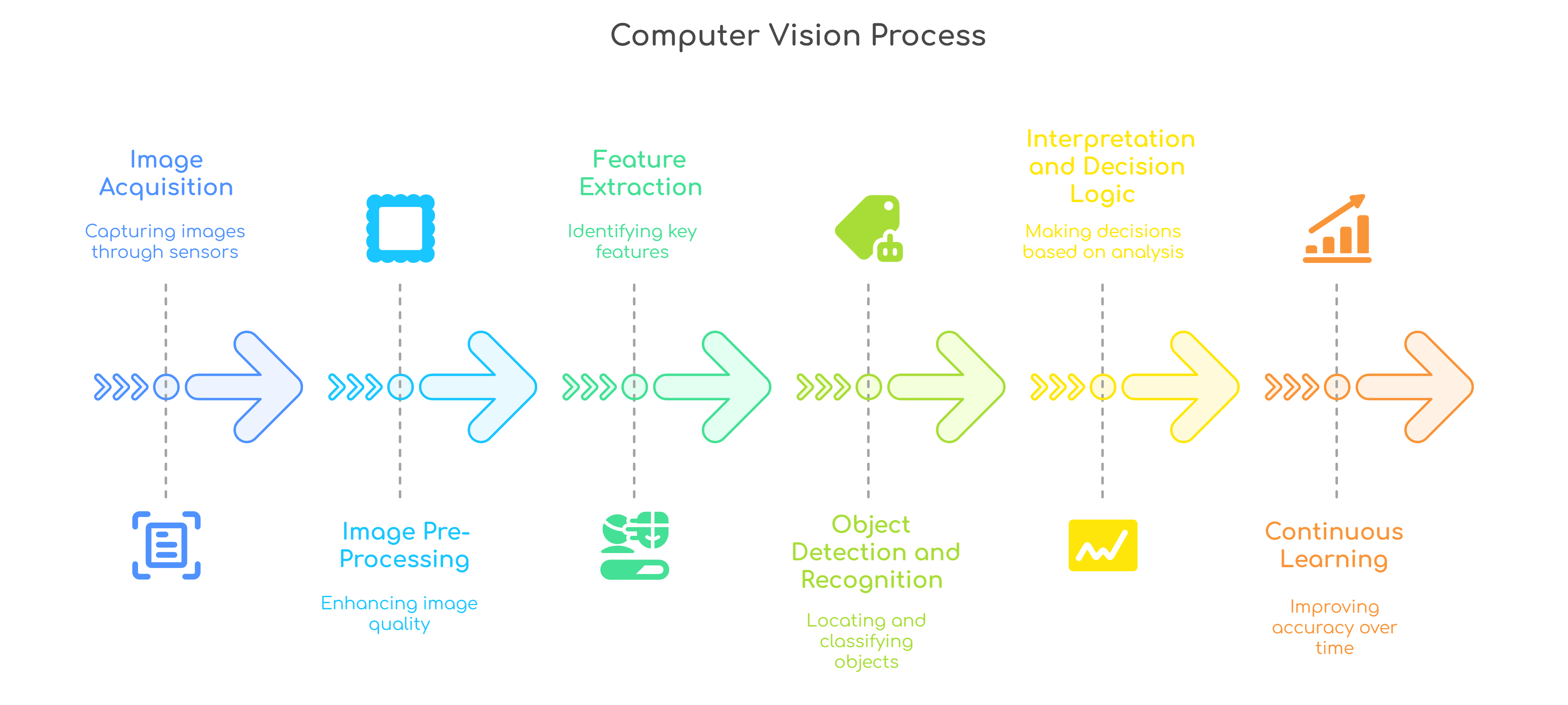
The model identifies what is present, like specific SKUs, empty shelf slots, customers, shopping baskets, and localises them within the scene.
Insights are translated into operational signals. For example:
• A gap on a shelf indicates immediate replenishment
• A build-up at checkout signals staffing reallocation
• Behaviour flagged as anomalous may escalate to loss-prevention alerts
As conditions change, like packaging updates, shelf rearrangements, and seasonal lighting, the model retrains and adapts. Performance improves with scale.
Well, the recent leap in performance is powered by deep learning, particularly Convolutional Neural Networks (CNNs) and emerging Vision Transformer architectures. Edge AI processing allows many decisions to occur on-site rather than relying solely on the cloud, reducing latency and ensuring that insights are delivered in real time. Integration with inventory management, point-of-sale systems, and workforce applications ensures that visual intelligence drives action.
Retail is moving from manual oversight to autonomous operations. Computer vision plays a central role in this shift by enabling retailers to understand exactly what is happening inside their stores, continuously, accurately, and at scale. By embedding visual intelligence into everyday workflows, retailers unlock performance gains across revenue, efficiency, security, and customer experience. Below is a structured view of where the value is created.
Stockouts are one of the costliest issues in brick-and-mortar retail. Computer vision helps eliminate blind spots by:
This ensures customers always find what they came to buy by directly improving conversion and basket size. Retailers shift from discovering problems late to addressing them proactively.
Long queues directly impact customer satisfaction and sales. Computer vision enables:
Customers experience a smoother, faster journey by raising loyalty and repeat visits.
A significant share of retail labour is consumed by repetitive, low-value tasks. Computer vision automates many of these activities:
Store teams can reallocate time toward customer service and high-impact selling tasks. Ultimately, labour productivity rises without compromising execution.

Shrinkage and theft erode margins every day. Computer vision enhances protection by:
Rather than forensic review after a loss event, retailers gain early visibility and can intervene before revenue disappears.
Computer vision provides a new level of insight into shopper engagement:
Merchandising teams can redesign displays based on real behavioural data by improving product discoverability and sales lift.
Physical and digital channels converge when the inventory view is always precise. Computer vision synchronizes in-store movement with inventory systems, enabling:
This supports a seamless omnichannel experience and protects customer trust.
Most importantly, computer vision is not a single-use case technology. It forms a long-term strategic capability. With the same visual infrastructure, retailers can progressively deploy:
One investment unlocks multiple innovation streams, helping retailers adapt faster as expectations evolve.
Overall, computer vision shifts retail operations from reactive to predictive. It elevates visibility, enables faster decisions, and strengthens consistency across all stores. Retailers who adopt this capability early will gain measurable advantages in efficiency, cost control, and customer satisfaction.
In a market where margins are tight and expectations continue to rise, visual intelligence is rapidly becoming foundational to every high-performing retail organization.
Across global retail, computer vision deployments are shifting from isolated pilots to enterprise-wide transformation programs. Below are the five priority use cases that are delivering the strongest and fastest returns.
Scan-less checkout, smart carts, and cashier-less formats use computer vision to identify products as shoppers pick them up, linking selections to the customer’s digital identity. The result is:
Retailers gain a clear efficiency advantage, particularly in high-traffic formats like supermarkets and convenience stores.
Computer vision continuously tracks product presence on shelves, detecting:
By connecting insights to inventory management systems, shelves stay replenished and stores recover sales that would otherwise be lost. It replaces time-consuming manual inspections with automated accuracy.
Retail shrinkage is a persistent margin challenge. Vision-based systems strengthen prevention by:
This shifts loss prevention from reactive security footage review to real-time intervention by protecting revenue while minimizing friction with legitimate shoppers.
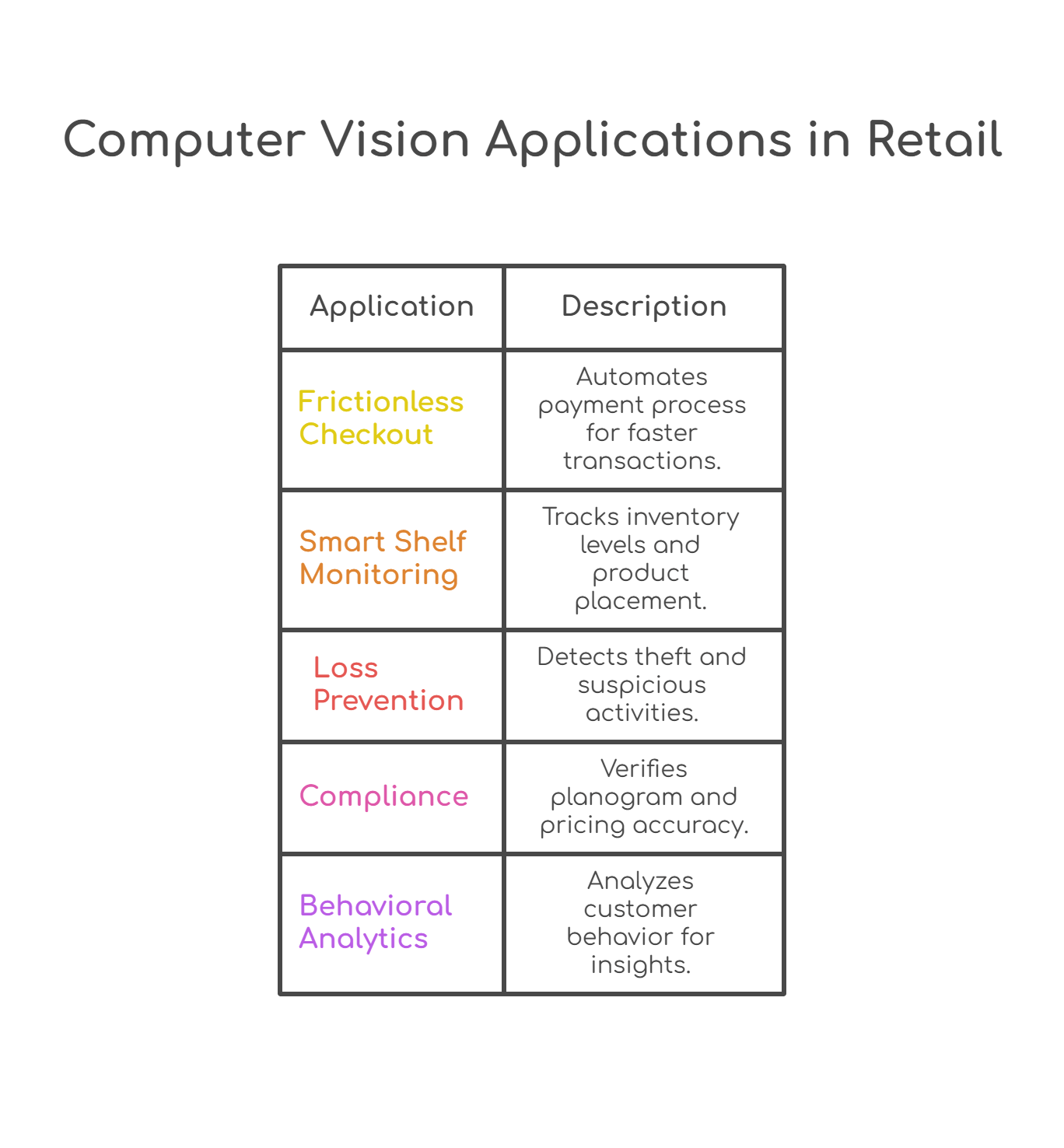
Ensuring display compliance is costly and inconsistent when executed manually. Computer vision automates checks on:
Retailers gain consistent execution across locations, alongside insights to improve promotional ROI and supplier negotiations.
Understanding how shoppers engage with the store environment drives better commercial decisions. Computer vision unlocks insights into:
These insights enable smarter layout design, more relevant product placements, and more effective staffing models by directly improving conversion rates.
As technology and adoption mature, retailers are expanding the scope of vision-based solutions:
These capabilities can typically be layered onto the same infrastructure, improving return on investment over time. This dual advantage is driving a measurable step-change in how stores are managed, protected, and optimised.
Computer Vision is emerging as one of the most transformative technologies in modern retail. By enabling machines to interpret visual data in real time, retailers can fundamentally reimagine store operations, customer engagement, and product availability.
At its core, the business case for Computer Vision rests on three priorities: increasing revenue, reducing operational costs, and improving customer experience. When deployed strategically, the impact is not just incremental; it can shift overall profitability.
Customers expect seamless in-store journeys. Computer Vision helps retailers anticipate and respond to needs in the moment.
By replacing traditional guesswork with data-driven insights, retailers can tailor experiences that make customers return more frequently.
Manual store management is costly and inconsistent. Computer Vision automates key workflows with precision.
The result is fewer lost sales, lower staffing waste, and higher planogram compliance.
Shrinkage continues to erode retail margins. Computer Vision enhances security using proactive interventions.
Instead of being solely reactive, retailers can deter theft before revenue disappears.
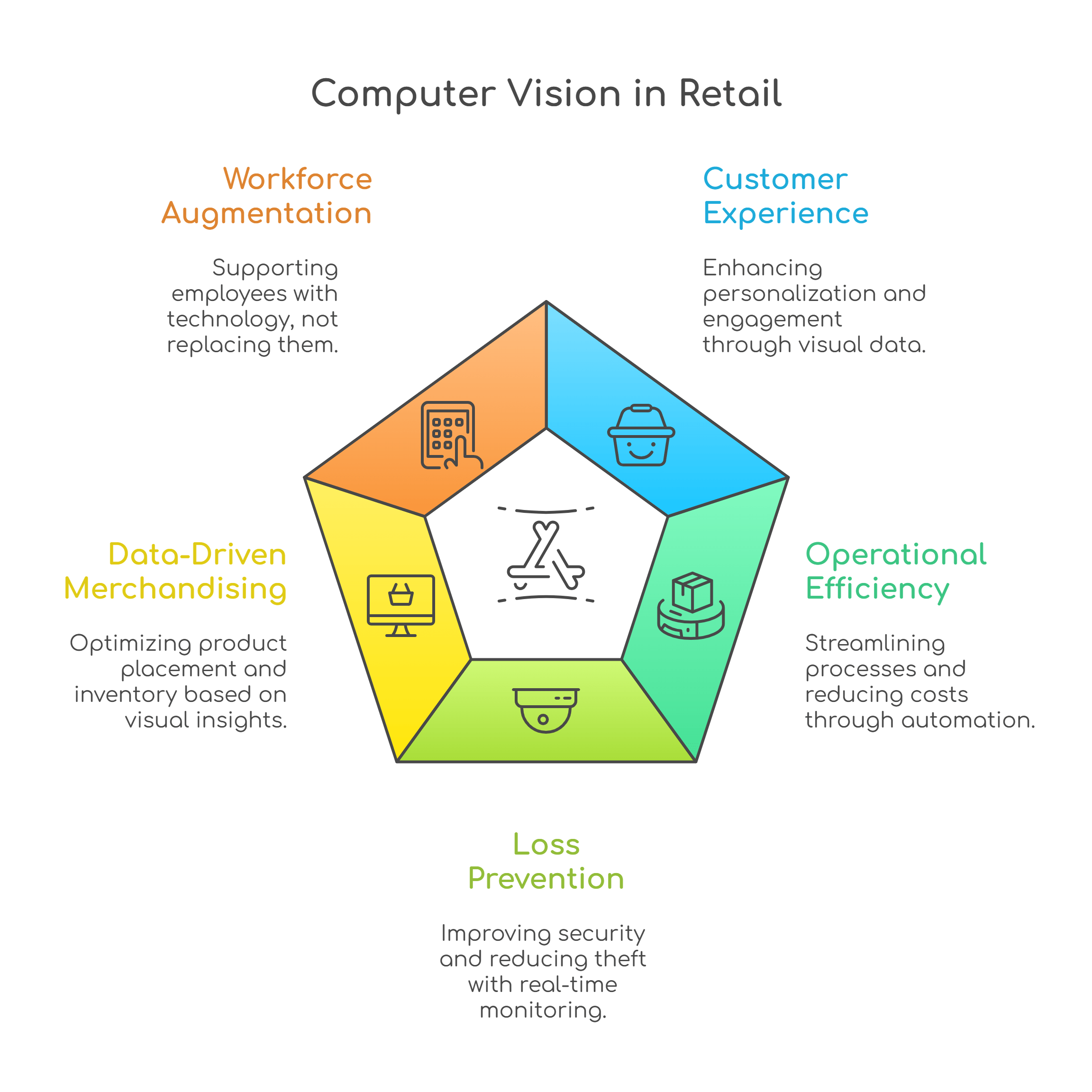
Computer Vision transforms visual cues into measurable performance indicators.
Retailers gain clarity on what truly drives sales, enabling evidence-based merchandising decisions.
Rather than reducing staff, Computer Vision enables them to focus on higher-value tasks.
Technology becomes an enabler for more human-centric retail.
Therefore, most retailers who adopt Computer Vision observe benefits within months, like reduced shrinkage, higher conversions, and improved operational velocity, and deliver rapid ROI. As stores become more intelligent, retailers gain the opportunity to operate with the precision of e-commerce, while preserving the experience-driven strengths of physical outlets.
Here are some real-world examples of how leading retailers are leveraging computer vision to transform in-store and quick-commerce experiences…
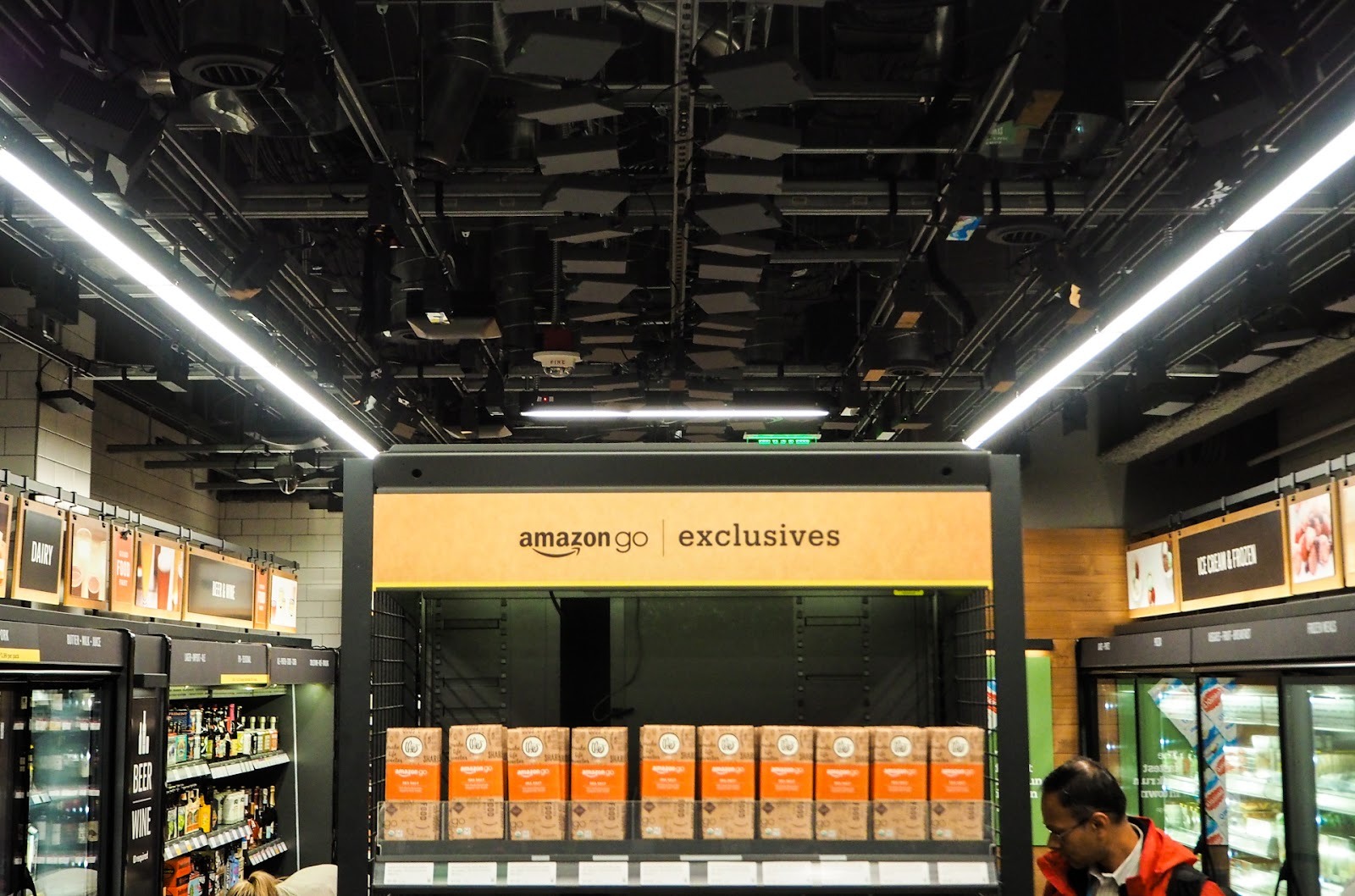

Amazon’s stores under the Amazon Go concept illustrate one of the most advanced uses of computer vision in retail. Customers scan into the store via app or membership, then shop. Cameras and sensors track their movements, determine which items are picked up or put back, and automatically charge their account upon exit.
Key takeaways:
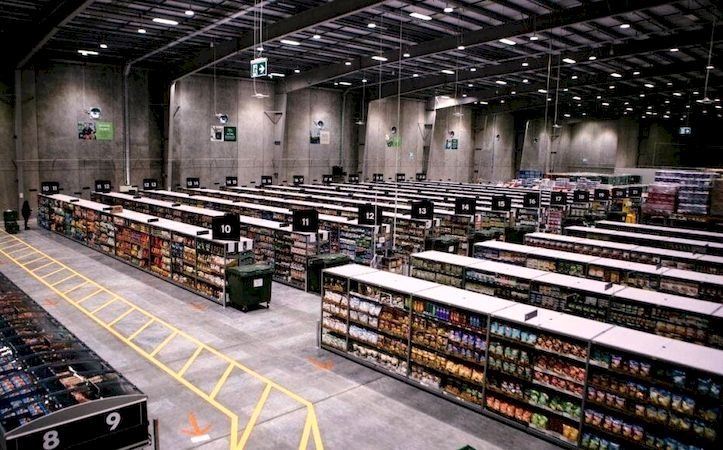
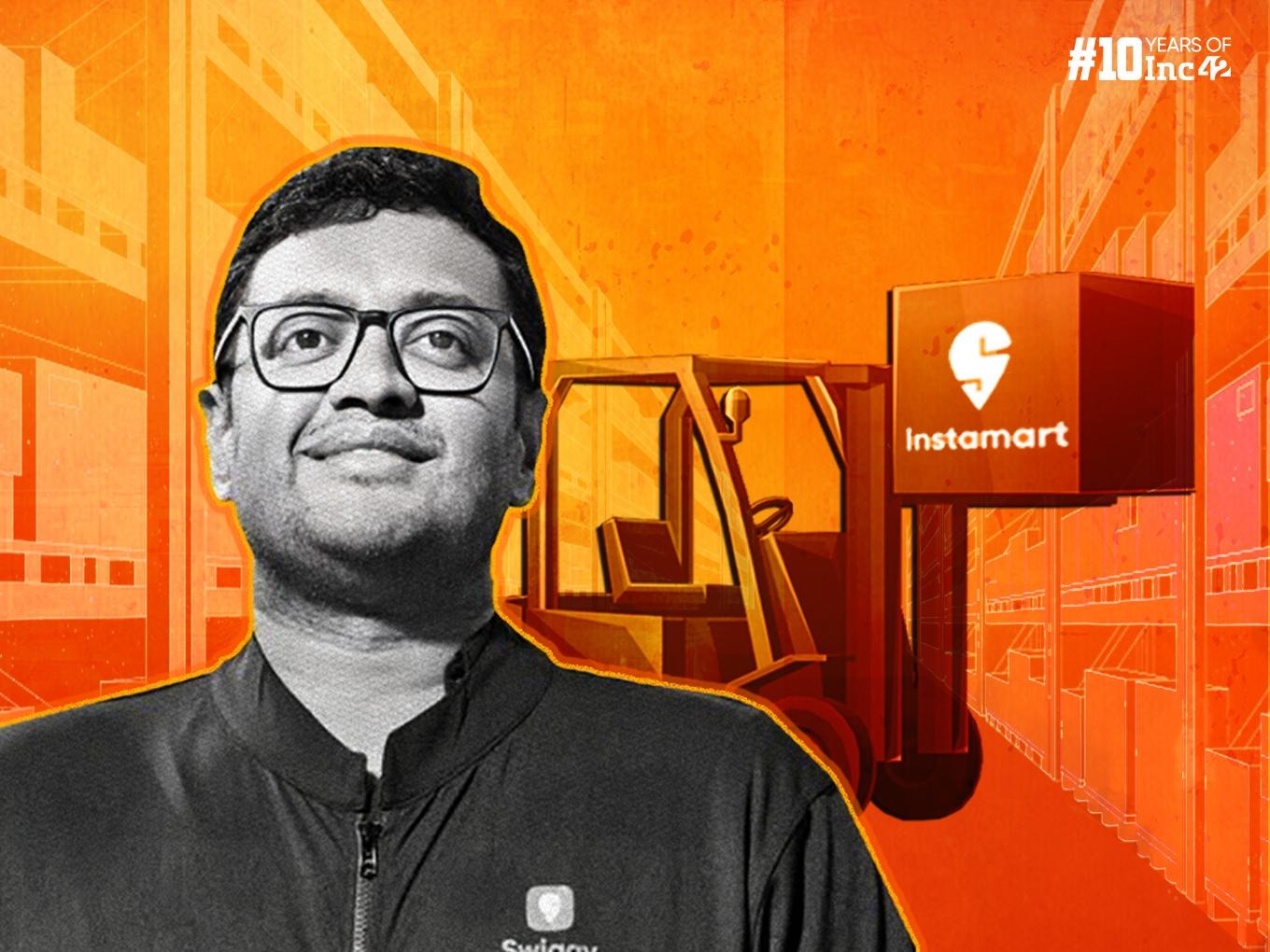
In the Indian market, Swiggy’s quick-commerce arm, Instamart (by Swiggy), is building ultra-fast fulfilment networks and increasingly applying advanced visual technologies. For example, the company uses machine-vision-enhanced systems for inventory tracking and faster in-store picking in its dark-store micro-warehouses.
Why does this matter?

In the fast-growing quick-commerce sector in India, players like Blinkit and Zepto are using dark‐store models (small, high-density fulfilment units) that increasingly rely on automation and visual logistics. While specific public disclosures on computer vision are limited, the very model of dense SKU-rich mini-warehouses implies the usage of advanced tracking and visual monitoring.
Relevance to retail:

In the global sports retail landscape, Decathlon is modernizing its store operations with automation and intelligent product recognition systems. By integrating camera-enabled checkout counters and product-tracking solutions with existing technologies like RFID, Decathlon is advancing toward faster, more seamless in-store experiences. While the company does not market itself as cashier-less, its hybrid setup demonstrates a practical and scalable application of computer vision in retail environments with diverse product types.
Relevance to retail
The next era of retail will be defined by environments that can observe, understand, and respond in real time. As computer vision becomes more accurate, cost-efficient, and scalable, the boundary between physical and digital retail will continue to blur. In the near future, retailers can expect three major shifts:
Stores will evolve into self-optimizing ecosystems. Every shelf, product, and aisle will continuously generate insights by allowing retailers to predict replenishment, manage in-store traffic, and prevent shrinkage before it impacts revenue.
Computer vision will enable retailers to tailor experiences to each shopper, from individualized product recommendations to targeted promotions triggered by in-store behavior. Customer interactions will move from transactional to intuitive, increasing conversion and loyalty.
As the technology matures, we will see concepts like Amazon’s “Just Walk Out” become mainstream and not as a novelty but as a cost-efficient operational model. Over time, stores will require fewer routine manual interventions, allowing associates to focus on expert assistance and customer engagement.
Computer vision has now become a strategic capability. Retailers who invest early will unlock:
Those who delay risk losing both customers and margins to faster, AI-enabled competitors.
At Antino, we help retailers bring computer vision ideas to life in ways that truly matter on the shop floor. Whether you want quicker checkouts, smarter shelves, stronger loss prevention, or more efficient dark-store operations, we build solutions that are practical, accurate, and tailored to your business.
Our goal is to help you run your stores with greater visibility and speed, while making every shopping experience smoother for your customers.
Hence, we work closely with your teams from start to finish by identifying the right opportunities, integrating with your current systems, and ensuring everything scales as your business grows. With Antino as your technology partner, you don’t just adopt new tools, you transform the way your retail operations work today and how they will lead tomorrow. So, connect with our computer vision experts right away!

